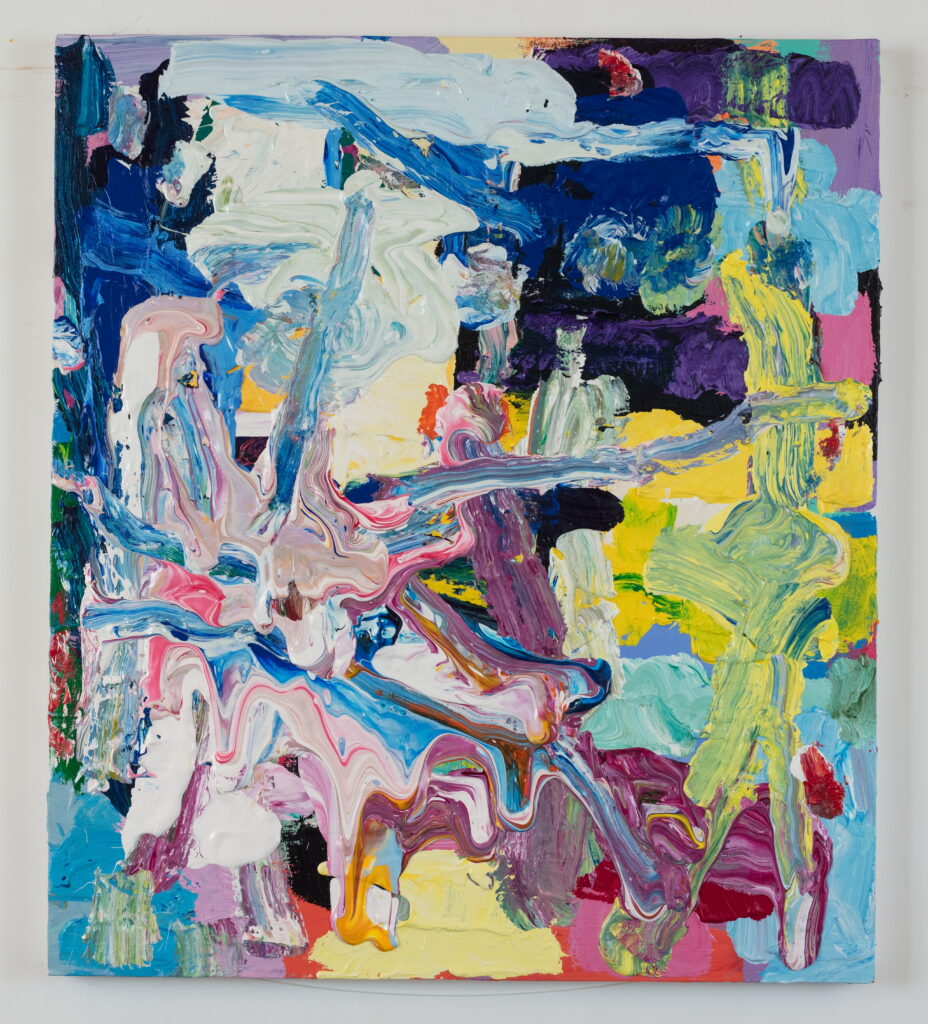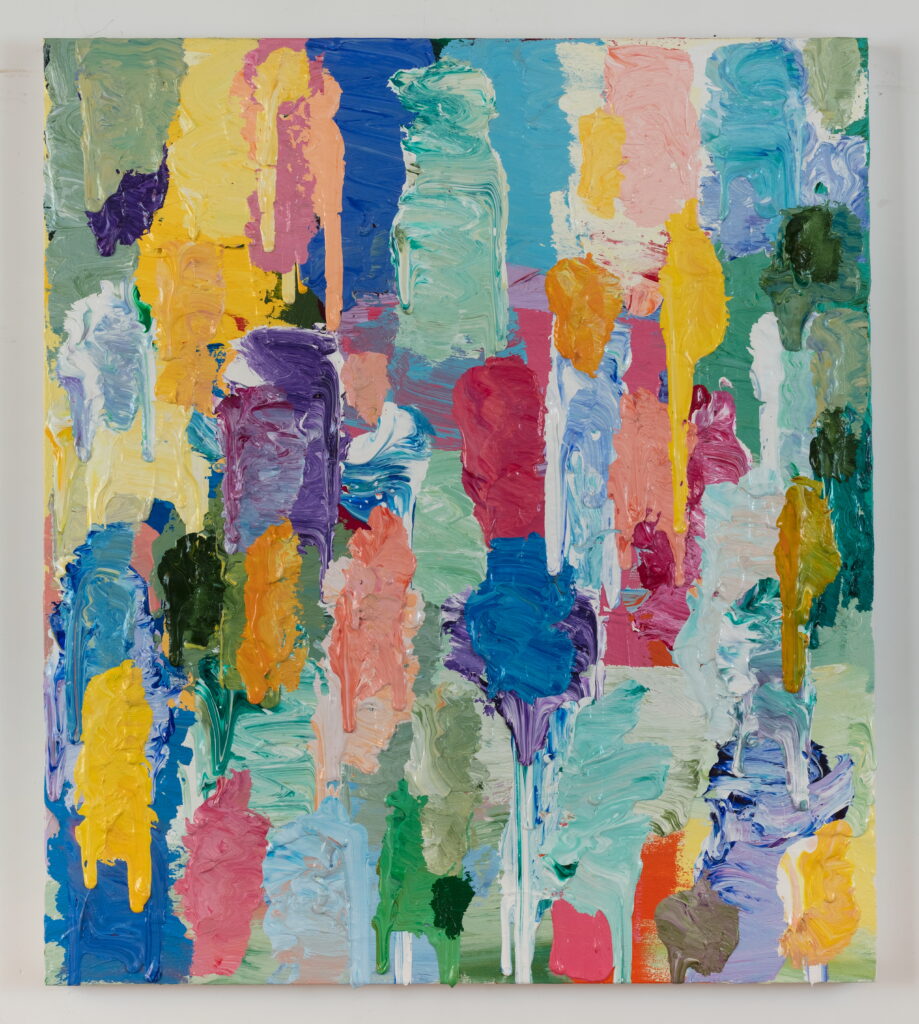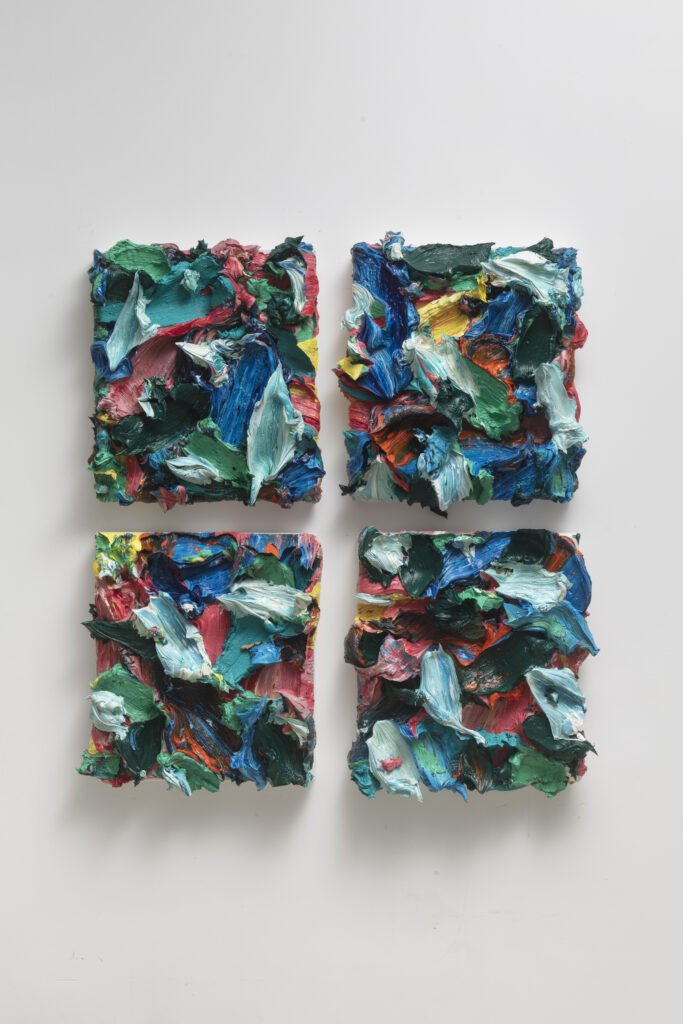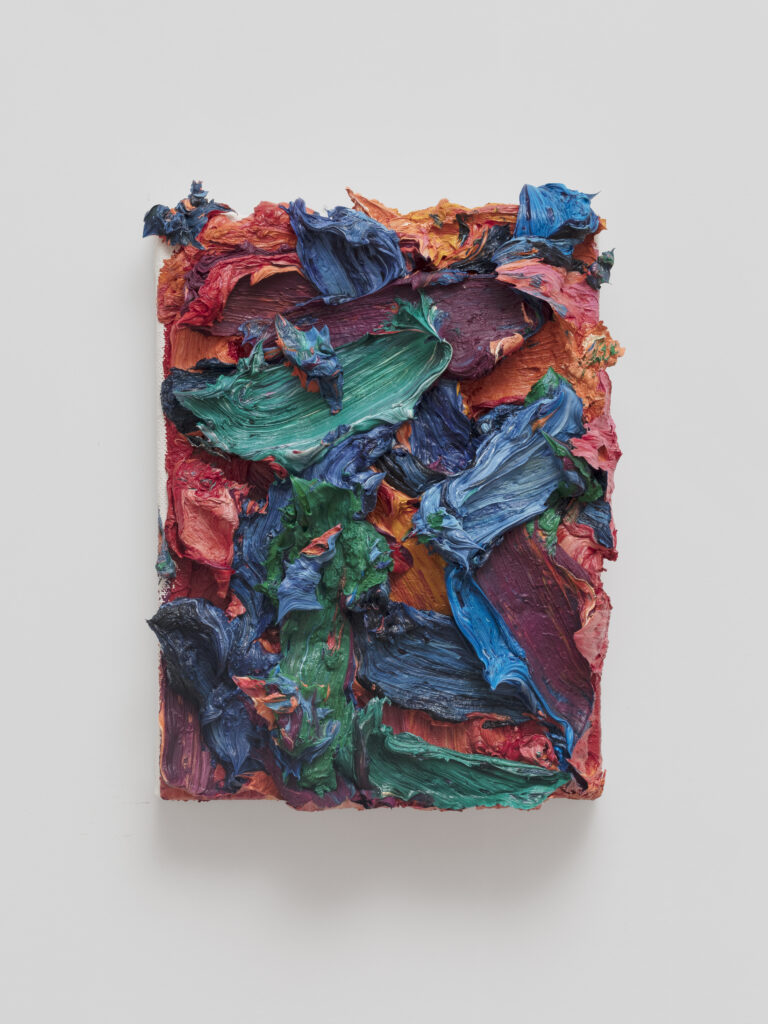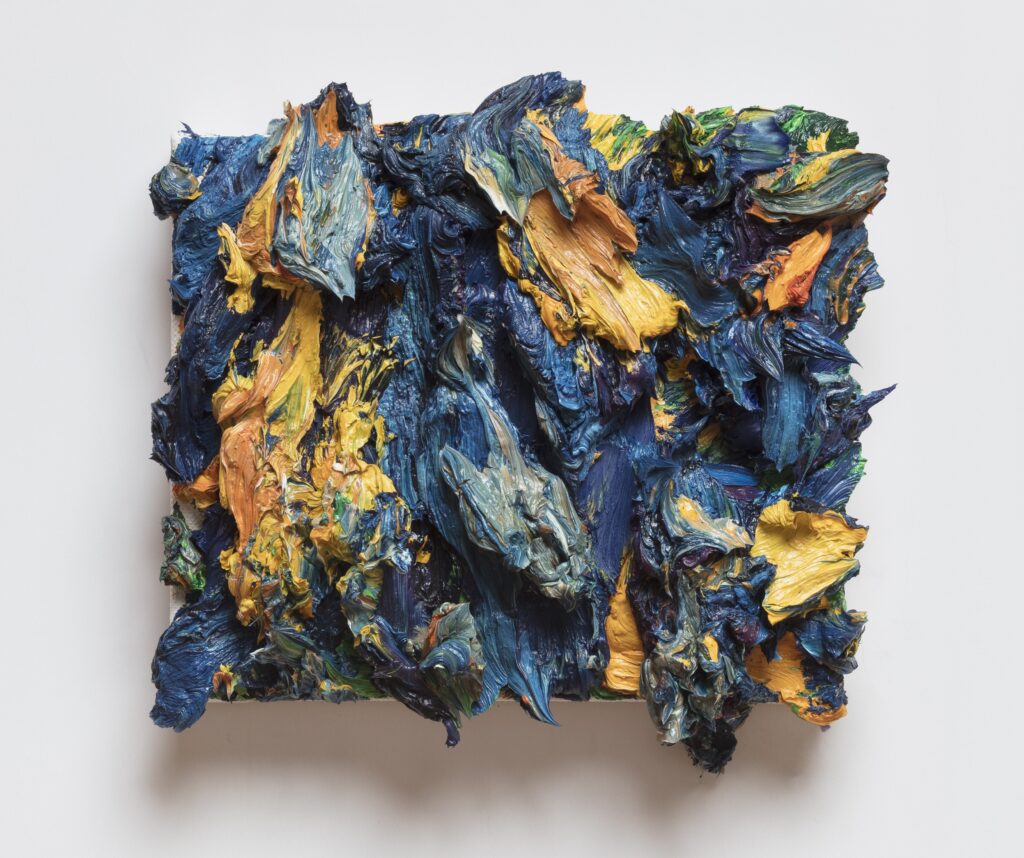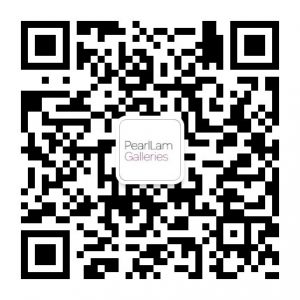30 July-20 Sept, 2022
NEXT WEEK TO MILAN
ZHU JINSHI Solo Exhibition
Shanghai
Overview
Shanghai—Pearl Lam Galleries is pleased to present the solo exhibition of Zhu Jinshi Next Week to Milan, which shows new works by the artist from the end of 2019 to the present, including thick acrylic paintings and small oil paintings. The artist, who has been living in his studio for a long time and barely goes out, often titles his works with fictional names and illogical images from his mind. Next Week in Milan, which is also the name of a painting in the show, starts a new journey of a mind traveller of art, inviting audiences to a space of floating paintings.
The new medium and working methods introduced by the artist in two new series in this exhibition both challenge his past painting practices and usher in a new approach to painting as a spatial construction. Zhu Jinshi uses undiluted acrylic paint in his new acrylic works. The fluid nature of the medium requires a very different response from the artist as opposed to oil paint. With overpainting of highly saturated colours onto the canvas, shell-like textures are gradually formed, achieving a well-controlled and balanced state between fluidity and solidity. The colour structure in I Don’t See Colourful Clouds Covering the Moon is multi-directional, extending outwards from all edges of the canvas. The placement of paint in blocks and a varied bright colour palette suggest a sense of unreal and horizontal movement, similar to the motion of clouds in nature, while a few vertical strokes and traces retain a subtle stillness, bringing a downward momentum to the image. In the other acrylic works in the exhibition, the multidirectional movement of the brushstrokes creates a disorientation, a method of working that not only challenges the process of painting, but also completely changes the perspective of viewing the painting.
During the past two years, while Zhu Jinshi has been working with this new medium and working method, he would choose to face a random direction of the canvas and change the directions irregularly at his will. He saw each change of direction as a new beginning, with the relationship between top and bottom (front and back) and left and right constantly interrupted and reset, breaking the inertia of the painting process. There is no presupposed specific viewing angle, and the overall composition allows the eyeline to naturally extend and spread beyond the canvas and what has been painted.
For Zhu, the sense of real space may only be a narrow view of the human experience, and the invisible multidimensional world is the only clue to understanding the reality of the universe. The imagery of multidimensional space is undoubtedly influenced by the artist’s reading on astrophysics in his early years, where string theory postulates that the smallest unit of matter is reduced to a “string”, which vibrates as if it were a musical note, and it is the different combinations of strings that build multiple dimensions of space. If thick painting is one of the ways to imagine multidimensional space, the flowing colour blocks and spatial expansion of acrylic painting is a further abstract interpretation of this multidimensionality.
Zhu Jinshi’s palette-like landscape paintings are composed of groups of small oil paintings created during the epidemic. Similar to how he approaches his acrylic paintings, the artist places each group of four panels on two or four movable worktables to begin work simultaneously, with the 3–5 cm wide broad brush first mixing the colours on dozens of palettes. The mixing takes place on the same few movable worktables, so that the artist can start working from any direction at any time. The height of the table allows him to move the brush in a similar way to ink painting and calligraphy, while the paint at the tip of the brush creates a spatial structure of intertwined colours as the three-dimensional brushwork is propelled forward, with the echoes of colour on the different panels creating a singular leap.
If the flowing blocks of colour of a regular size acrylic painting and the three-dimensional brushstrokes of a small oil painting can be imagined as strings of colour, as two different frequencies of spatial expansion and movement, the large multiples of acrylics in the final room of the exhibition attempt to present a freer and more spectacular multidimensional vision. In this work, a paint squeegee fixed to the end of a long pole travels across the surface of the canvas, leaving rut-like traces wherever it goes, while the superimposed texture created by smearing and swiping creates a majestic piece of music. The unknown dimension in space seems to play with the sound of strings, echoing beyond the boundaries of our vision and perception, hard to trace but transforming infinitely.


